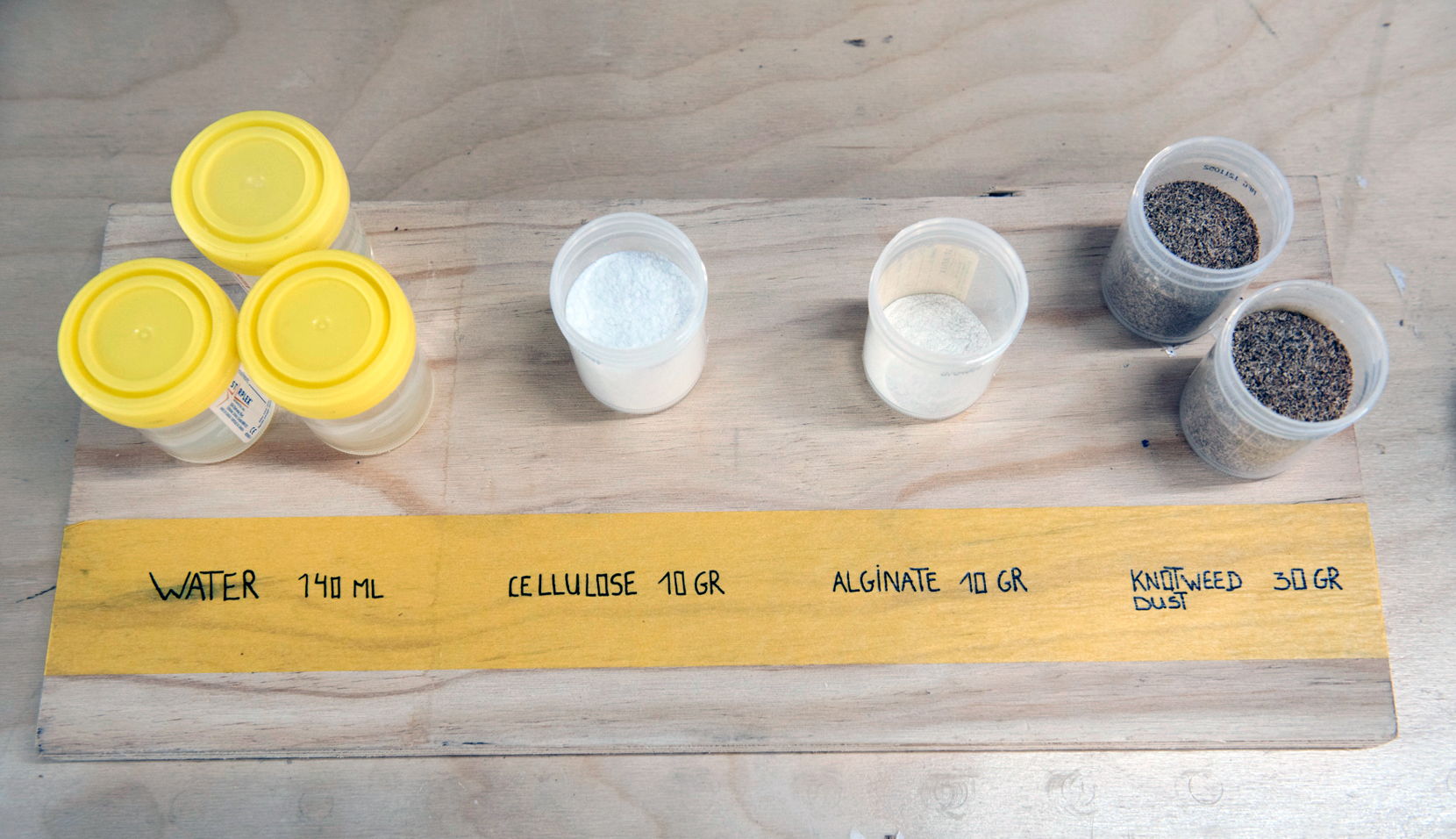Marta Boniakivska on Summercamp Fiber Fever 2024

“I want to introduce biomaterials in industrial design” - Marta Boniakivska
As a participant of the Summercamp 2024, Marta Boniakivska enjoyed an immersive experience within the context of Timelab. A few months after her participation, she shares her reflection about how it changed her mindset, both as a designer and as a person.
How did you get in touch with Timelab?
“In 2024 I’ve participated in a summerschool in Latvia organized by Sarmite Polakova, who’s exploring new materials such as bark. She recommended me to have a look at Timelab. After a Diploma Product Design at the Hochschule Wismar, I started the master Material Culture. We’re only three in class, and we’re all exploring very different topics. Although I’m rather working on my own at school, I’m super motivated to continue my research. The Summercamp ‘Fiber Fever: Biomaterials, beyond the sample’ at Timelab has strengthened my motivation even more.”
Which aspect made the Summercamp so special?
“The team managed to bring an amazing crew together. As everybody was so competent and creative, it created a powerful whole. It was fascinating to work close together with engineers. Moreover, accompanist Helena De Smet prepared a huge set of specimens as a base to start from, and she documented everything very well. While Lieven Standaert was always available to help with the 3D-printer. At first, I was afraid I would not be able to work with this tool. Now I want my own.”
What did you work on during the camp?
“Together with Jelle De Decker and Jamie van Duuren I was part of the Layer Slayerproject, which was researching the possibilities of printing with a cellulose paste on textiles. But I must confess that I was soon completely overwhelmed by the possibilities of the material itself, so I mostly worked on my own. I was so excited that I even couldn’t sleep. I immersed myself in the cellulose, and changed the recipe to make it properly white, smoother to work with and at the same time as hard as a rock. Nowadays, I’m researching to make it shrink less and, in doing so, also deform less. As it looks almost like porcelain, it’s fascinating. I try to convince my university to build our own 3D-printer for biomaterials based on Lieven’s documentation. If they don’t want to invest, I will build my own.”
Why are you so fascinated by biomaterials?
“As a designer, I don’t want to use virgin materials anymore. I even got the idea of stopping to build prototypes for my products, as I consider them as a waste of material. But not all teachers agree. (laughs) We need to see our trash as a treasure, understand the full life circle of a product and have more respect for the environment. We must limit the production of new things to a bare minimum and change our perspectives. As a product designer, I want to introduce biomaterials in an industrial design context. I want to develop realistic applications, so my research about biomaterials doesn’t stay conceptual but becomes really grounded.”
Do you think consumers are willing to buy these new kinds of products?
“Using my knowledge from the summercamps in Latvia and at Timelab, I developed a lamp out of cellulose fibers and corn starch last semester. The construction of the lamp is modular and 3D-printed with PLA. This is covered with my biomaterial. The concept is quite remarkable and gives us the opportunity to easily repair or recycle the entire product in the future.” “In my master’s thesis, I’m looking deeper into the potential applications of biomaterials in industrial production and alternative consumption scenarios. Furthermore, I investigate how these materials will behave in the future and how we can deal with possible consumer skepticism. My focus is directed towards researching the emotional attachment to products and the impact of the story on the consumer, as it affects the conscious consumption, taking care of things and thus extending the life of the product.”
How do you look back at your experience six months later?
“The Summercamp still affects me. Not only because of all the knowledge about biomaterials I gathered, but maybe even more from a human perspective. It took me months to fully digest the experience. Afterwards, I think I was too passionate about my own discoveries. I wanted to understand everything at once. That’s why I wasn’t open enough towards the other participants or mentors. I should have listened more to their critical reflections. I was full of fire, but I just burnt myself. I feel that I’m learning to be more grounded and to communicate better with others. The power of working together and the way we’ve talked during the Summercamp, changed my mindset.”
Interview: Elien Haentjens
Photo: Arron Lapeirre